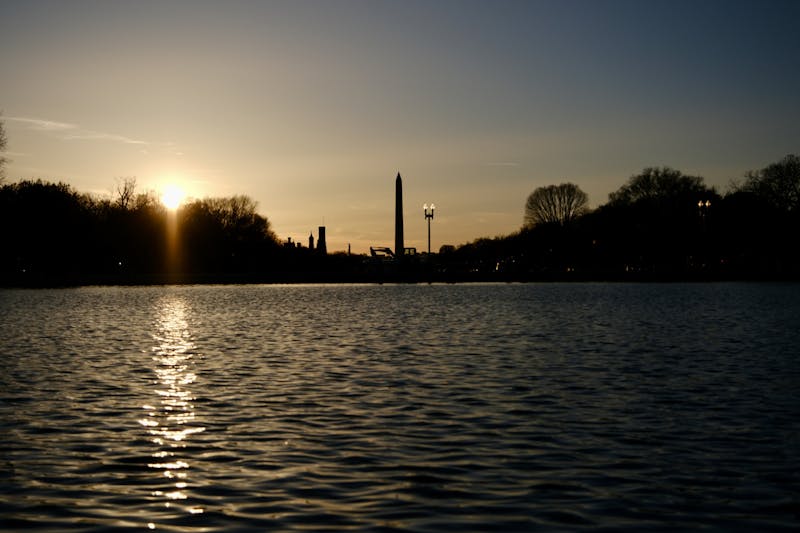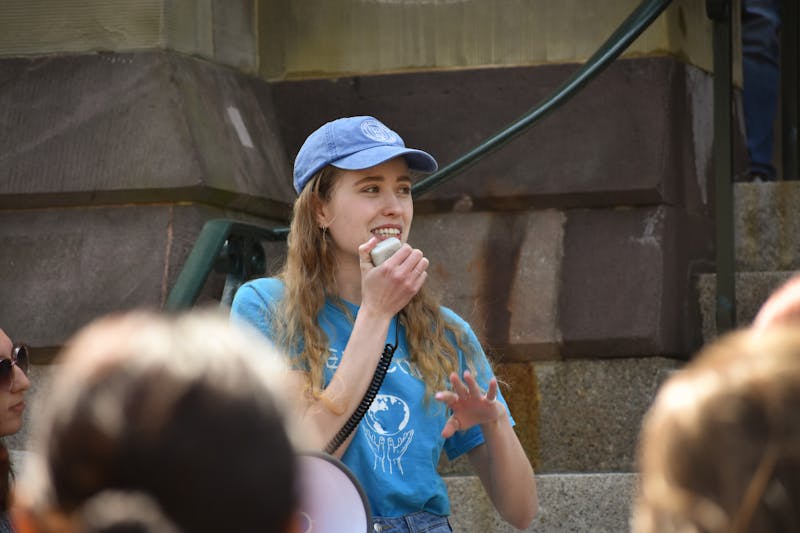
International Usain Bolt ran the 4x100m relay for Jamaica at the 2010 Penn Relays. (File Photo)
At a whopping 125 years old, the Penn Relays predates the addition of six states to the Union.
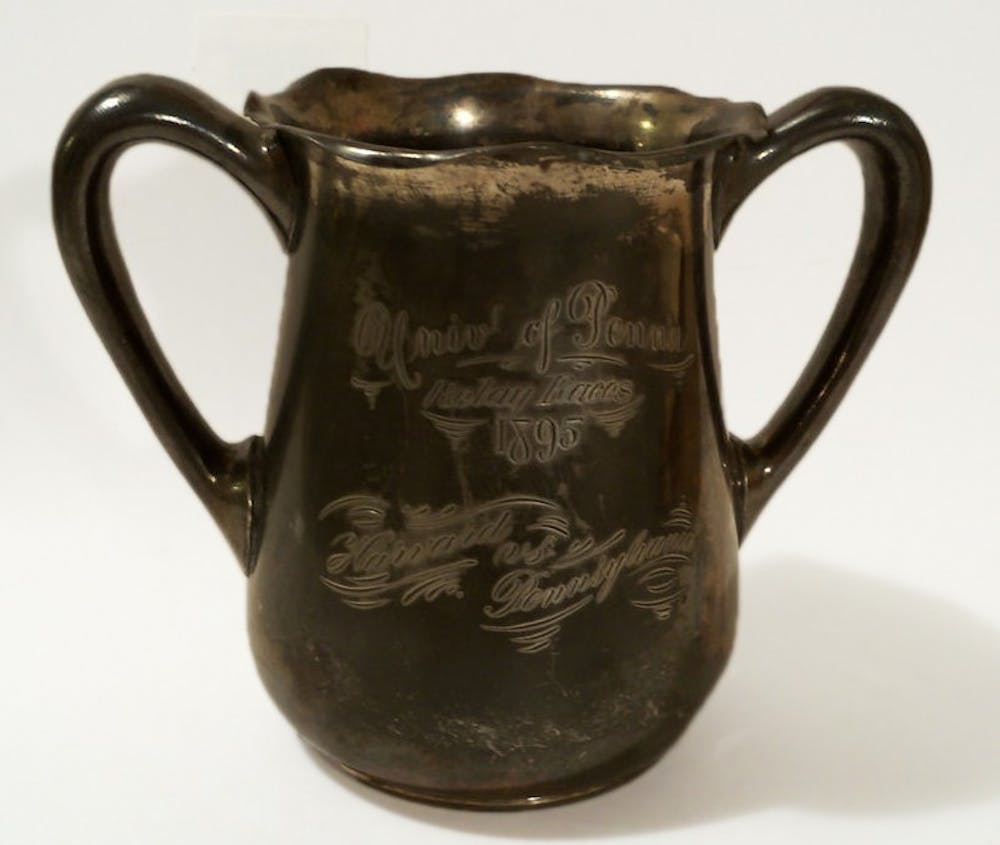
The first Penn Relays trophy
Founded in 1895, the Relays are the oldest collegiate track meet in the United States. Every year, top high school, collegiate, and Olympic-level athletes travel to Franklin Field to compete in front of an international crowd. The race has expanded from nine races attracting 5,000 spectators to now over 425 events, which attract as many as 110,000 fans. The transformation did not happen overnight, so on the 125th running of the event that draws more athletes than the Olympics, we’re taking a look back at the biggest historical moments.
The first year, the meet had only nine events, with four for college and four for high school athletes. The last was a college championship, which in its first year was won by Harvard, as the Crimson men defeated the Red and Blue in the 4x400-yard relay.
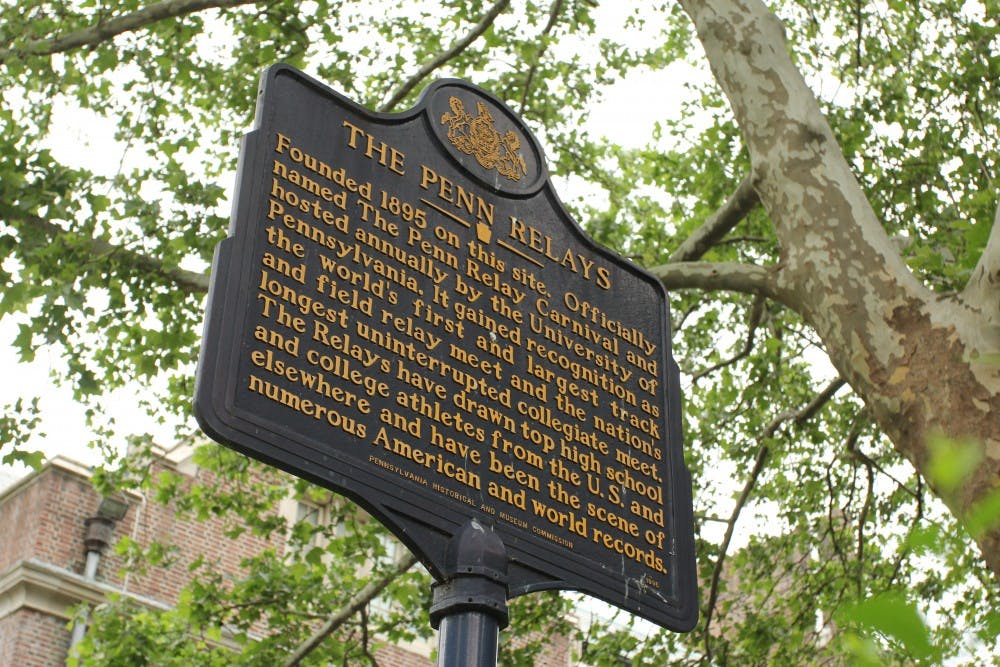
A commemorative sign outside Franklin Field
The meet predates the first modern Olympics by a year, and after only 19 years, it began drawing a similar international crowd. In 1914, a team from Oxford University in the United Kingdom traveled across the Atlantic by boat to compete and ultimately win the four-mile relay.
The Relays quickly became a pit stop on the path to greatness for many track legends. In the months leading up to the 1936 Olympics in Berlin, Jesse Owens represented Ohio State at the Relays and won three separate events. Later that year, he would win four gold medals at the Olympics, a remarkable event of huge symbolic significance for America's strength against Nazi Germany before World War II.
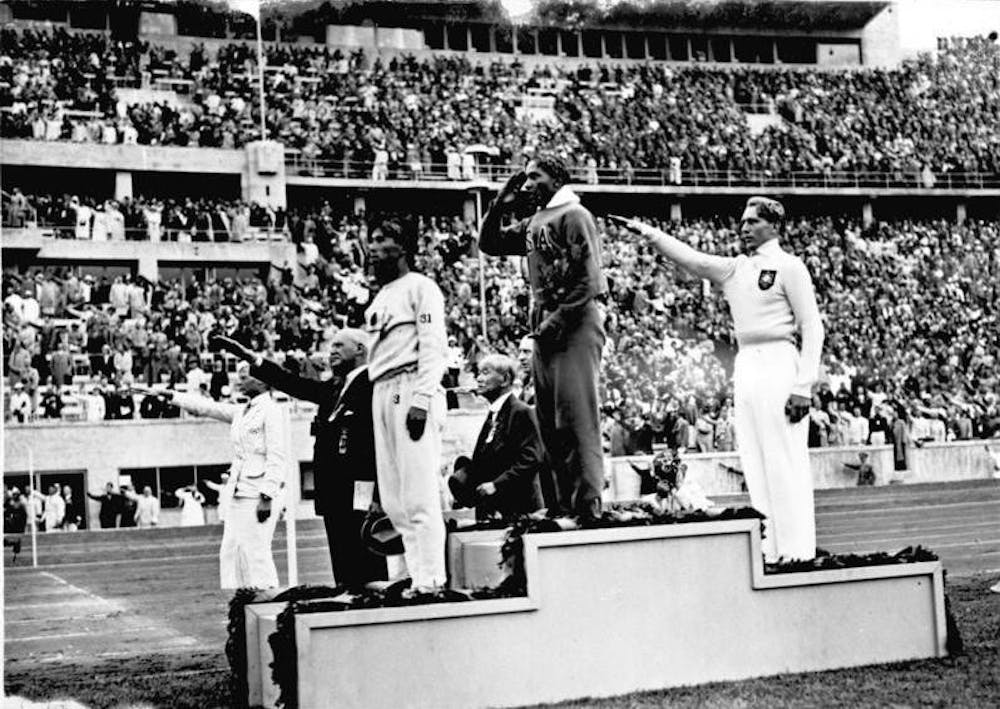
Roger Bannister, the famous British mile runner, ran the Ben Franklin Mile at the Penn Relays in 1951 in a record time of 4:08.30. He would go on to become the first man to run a mile in under four minutes.
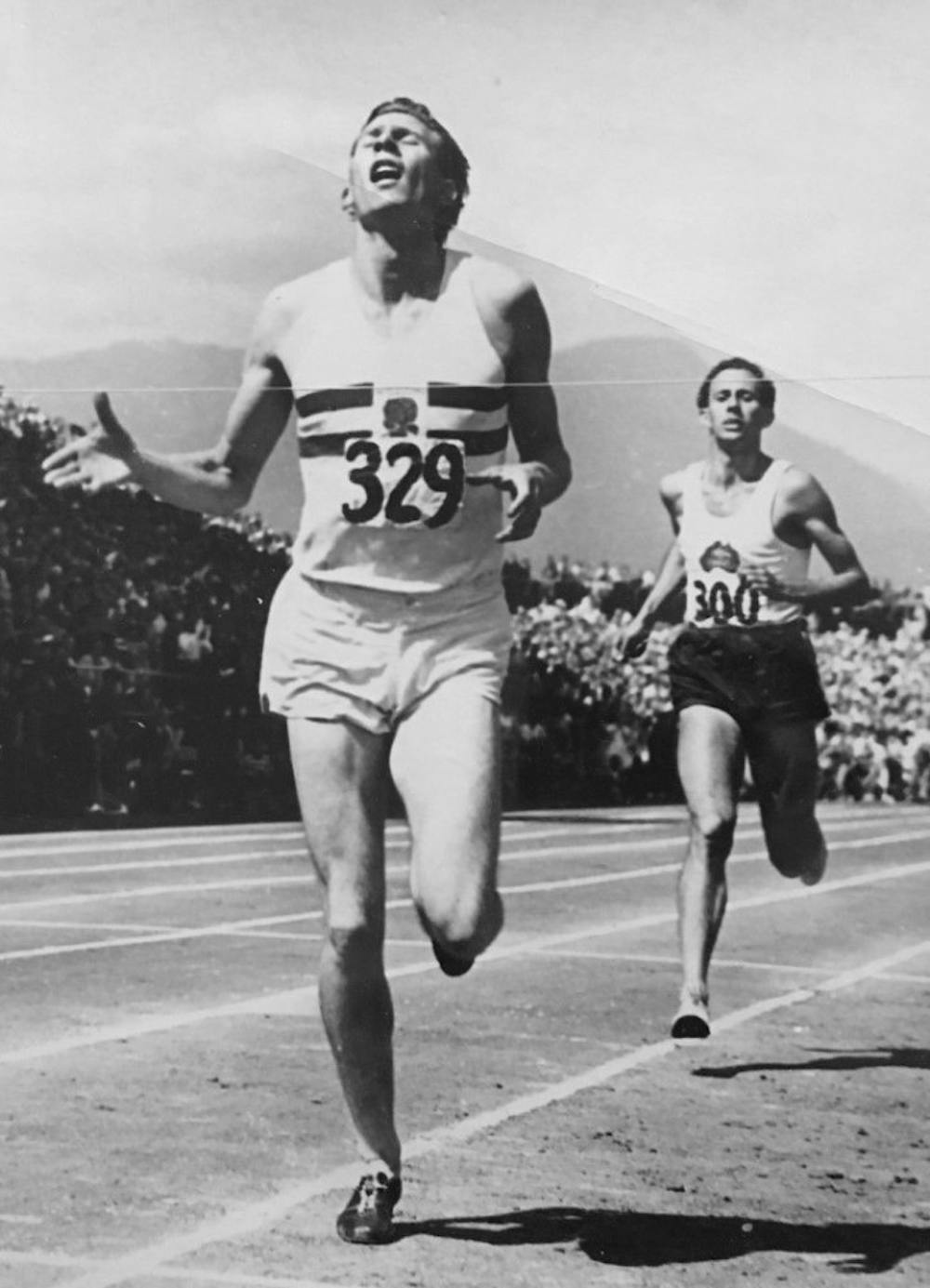
Other famous athletes who have run at the Relays include Wilma Rudolph, Bob Beamon, Edwin Moses, Joan Benoit Samuelson, and Marion Jones. Most recently, Usain Bolt ran the 4x100m relay for Jamaica in 2010 as part of the USA vs. the World event, which was added in 2000 to expand the meet’s international presence.
Although there has been a significant presence from male competitors since the meet’s inception, the women’s side did not see development until much later.
In 1962, an event for women was finally added for the 68th iteration of the meet. The inaugural event was the 100-yard dash, and only nine women were invited to compete. Among them was Willye White, who competed and medaled in every Olympics from 1956 to 1972. White won the event, clocking 10.90 seconds to cement the gold medal standard of women competitors at the Relays.

Villanova women's track coach Gina Procaccio
Gina Procaccio, the current Villanova women’s track coach, has been attending the meet for 40 years, first as an athlete, and now as a coach for the one of the most successful women’s programs. For her, the legacy of Penn Relays is what it’s been able to do for women’s running.
“It’s a meet that you get a lot of exposure from. For any women’s program that has success here, you’re going to hear about it,” Procaccio said.
The transition from having all male events to eventually adding a third day of competition completely devoted to women’s events in 1978 marks the Relays’ influence on women’s running as a whole. The Relays quickly became a place where aspiring female Olympians would make their first mark on the running community.
Gold medalists at the Los Angeles Olympics in 1984, Benita Fitzgerald-Brown, Chandra Cheeseborough, and Diane Dixon were some of the earliest competitors in the Women’s Day events.
An event with undeniable historical significance, the meet stands for more than just athletics. Its longstanding presence has become a tradition that is ingrained in people’s lives.
Robert Batdorf, the 1960 and 1961 discus champion and 1962 Penn graduate, recalled dreaming of running in the Relays from an early age.
“After my father took me down to see the relays when I was I kid, I had always wanted to compete in the Relays against the best people in the country so that I could see what I could do,” Batdorf said.
The allure of the competition similarly infatuated John Haines, a 1956 Penn graduate, who won the 100-yard dash his senior year, holding an all-time record of 9.60 seconds for three years, before it was broken in 1959. The Penn Relays have made such a profound impact on his life that after finding great success as an athlete for eight years, he transitioned to officiating, a role he has had with the meet for 53 years now. Haines has passed on this passion for the Relays to his entire family.
“Within the Haines family, I would say if I added up my years and my various sons' and daughters' years, I would estimate we’re up to 200 years total of attending the Relays,” he said. “When you run the Relays, I don’t care how old or young you are, you always remember. People just remember. It’s a big event and a big part of people’s lives.”
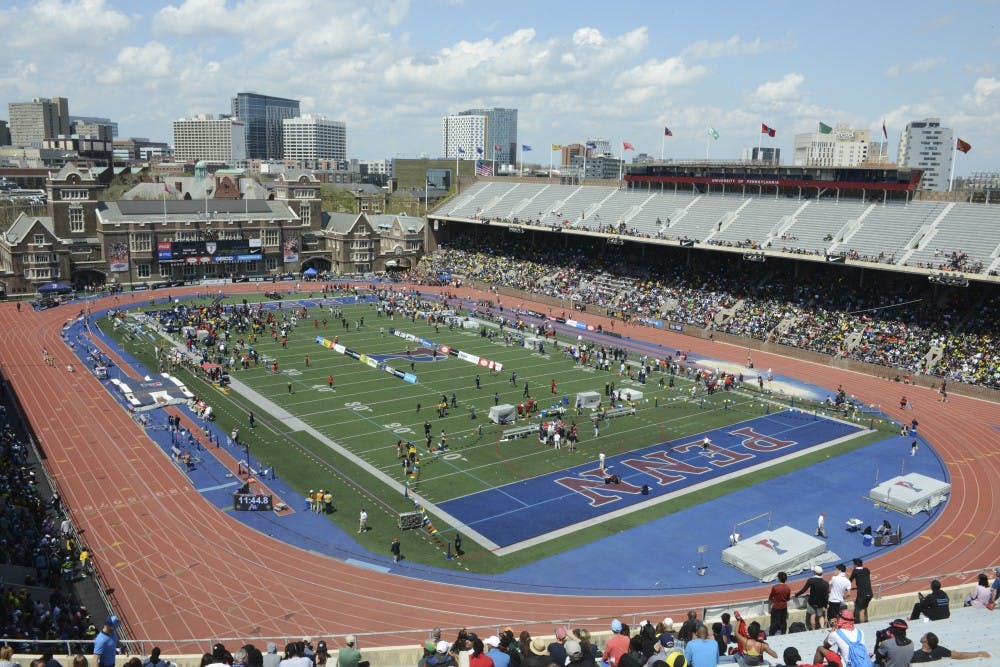
Franklin Field
In 125 years of running, the meet has touched countless people’s lives across generations. A great portion of Penn Relays competitors go on to live extraordinary lives beyond athletics. Among them are famous figures such as Buzz Aldrin, Sean “P. Diddy” Combs, and even Bernie Sanders.
If you choose to attend the Relays this weekend, make sure to look out for the next Olympian, presidential candidate, or even space traveler. You might even witness history in the making.
The Daily Pennsylvanian is an independent, student-run newspaper. Please consider making a donation to support the coverage that shapes the University. Your generosity ensures a future of strong journalism at Penn.
Donate




